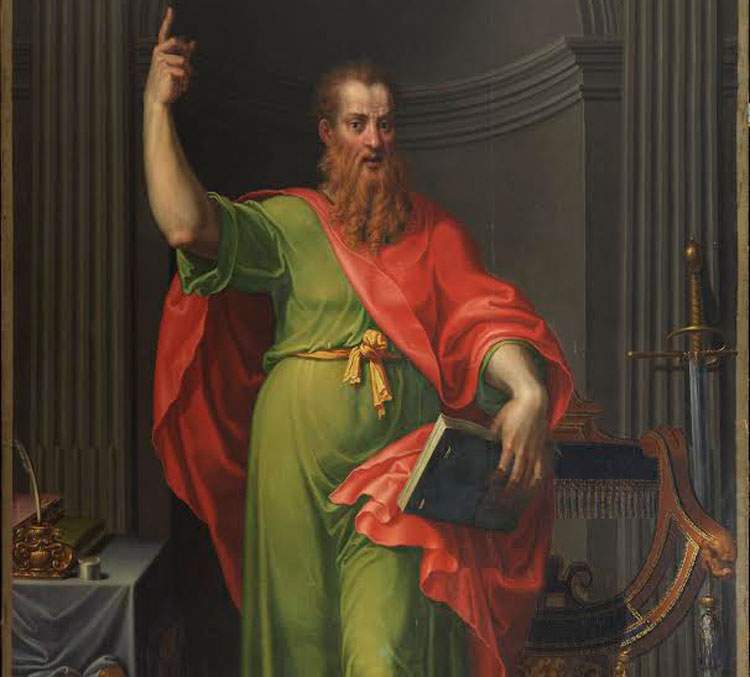The Uffizi acquires important 16th-century painting: it will remain in Italy thanks to the research of a young scholar
Thanks to a collaboration between the Uffizi Galleries, the Genoa Superintendency and the Abap Directorate General, the impressive altarpiece depicting St. Paul for the Borromeo Chapel in Santa Maria delle Grazie in Milan, the church where Leonardo’sLast Supper is kept, remains in Italy. After being sold at an auction, the painting was about to leave the country, but it was blocked and purchased by the state for the Uffizi Galleries.
The work was created by Pellegrino Tibaldi and his Milanese pupil Giovanni Pietro Gnocchi in 1585 and depicts the standing saint accompanied by his attribute, the sword, beside a writing desk on the base of which the date is written; behind it is a monumental architectural background.
Recently sold at auction to a private individual with an unreliable attribution to Flemish painter Pietro Candido, the painting was about to leave Italy, but was blocked by the Export Office of the Genoa Superintendency at the request of the Uffizi Galleries, and purchased by the General Directorate of Archaeology Fine Arts Landscape through the right of first refusal, for the Florentine museum.
The reconstruction of the historical events of the painting was done by a young scholar, Agostino Allegri. In 1585, the heirs of St. Charles Borromeo entered into an agreement with Giovanni Pietro Gnocchi under which the decoration of the family chapel within the year was established. The artist was responsible for gilding the lantern dome, but above all he was commissioned to make an altarpiece depicting St. Paul for the altar, following the design of Pellegrino Tibaldi. As early as two years later, in 1587, the painting was already placed on the altar of the chapel, as it was mentioned by Giovanni Paolo Lomazzo in one of his Rime. The Borromeo chapel was badly damaged during the 1943 bombing, but testimonies state that the painting had already been removed from the altar in the early 19th century.
“Recognizing the quality of a painting and preventing it from leaving Italy is part of the protection work to which state personnel are called,” said Galleries Director Eike Schmidt, “in this case the Soprintendenza di Genova, the Uffizi Galleries and the Direzione Generale Archeologia Belle Arti e Paesaggio. To discover so quickly their provenance and to be able to reconstruct the entire historical story of commissioning and execution is a fortunate and at the same time very rare case. The joining of forces between the institutions of the Ministry of Culture and the University, the in-depth investigations of Agostino Allegri, currently a doctoral student at the Scuola Normale in Pisa, and the contacts between scholars and specialists have not only revived a masterpiece, revealing its correct authorship, but have brought to light an entire chapter of the art history of the Counter-Reformation in Milan.”
Pellegrino Tibaldi and Giovanni Pietro Gnocchi, Saint Paul, detail (1585; oil on canvas, 275 x 182 cm)
 |
| The Uffizi acquires important 16th-century painting: it will remain in Italy thanks to the research of a young scholar |
Warning: the translation into English of the original Italian article was created using automatic tools. We undertake to review all articles, but we do not guarantee the total absence of inaccuracies in the translation due to the program. You can find the original by clicking on the ITA button. If you find any mistake,please contact us.




























